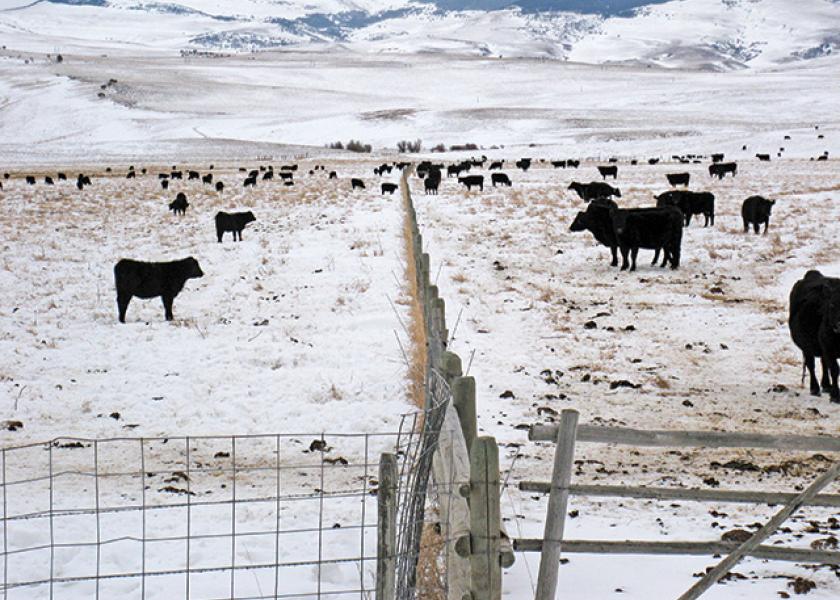Baby Calf It’s Cold Outside!

So far, this fall/winter season has been much warmer than previous years. Past images of new-born calves being warmed up in trucks, and busy veterinarians made me wonder about the economic consequences of winter calving. Thanks to the efforts of many, we were able to collect data from ranchers and veterinarians to evaluate the financial implications of calving. We currently have a publication in process with Dr. Eric DeVuyst, Dr. Dave Lalman and our former Oklahoma State graduate student Amanda Upton. Amanda successfully completed her thesis on this topic over the summer.
Our goal was to evaluate the implications of calving date on expected annualized return per head for a cow calf operation. We were working under the idea that early calving with increasingly cold winters in January may lead to more veterinary costs, higher death loss, and increased feed costs. We used information from a survey of producers, veterinarians, and feedlots, as well as simulated programing to get some answers.
Despite having really cold winters in recent memory, 62% of producers strongly disagreed that they see frozen ears/tails/legs on their cattle. Similarly, 10% of veterinarians who worked with 501-1,000 cattle saw 0-2% of the cattle with frost damage. The average for a veterinary call was approximately $70, and a cost of $5.70 was reported for frost related medication.
Per the veterinarian survey, 48% of producers do not typically seek veterinary assistance with frost related issues. Only 13% of producers indicated that they strongly agreed that frozen ears/tails/lets are a problem. 56% of producers expected a discount per CWT at the sale barn of between $0.01 and $15.00 for frozen ears, tails, and legs. Despite the conversations regarding battling the winter elements as a cow/calf producer, the reality is that it is less of a problem than expected.
Calving in mid-March resulted in highest annualized returns per head. Most of the producers we surveyed calved in March. 58% of producers indicated that calving date was part of their grazing management strategy, and 52% indicated it was part of their marketing strategy.
There were non-management factors behind calving date as well. For 34% of producers their chosen calving date was most convenient for them because the timing worked best with their off farm enterprises. For 30%the timing worked best with their off-farm job, and for 9% the timing worked best with their seasonal labor.
In short, despite the popularity of news clips, and 6 o’clock sound bites, the effect of winter weather in terms of frost damage to cattle was less of a problem than expected. Most producers were calving during the higher annualized return period of March. It is important to keep in mind that your operation may have other constraints, such as labor or other enterprise requirements that may make a different calving month a better option.







